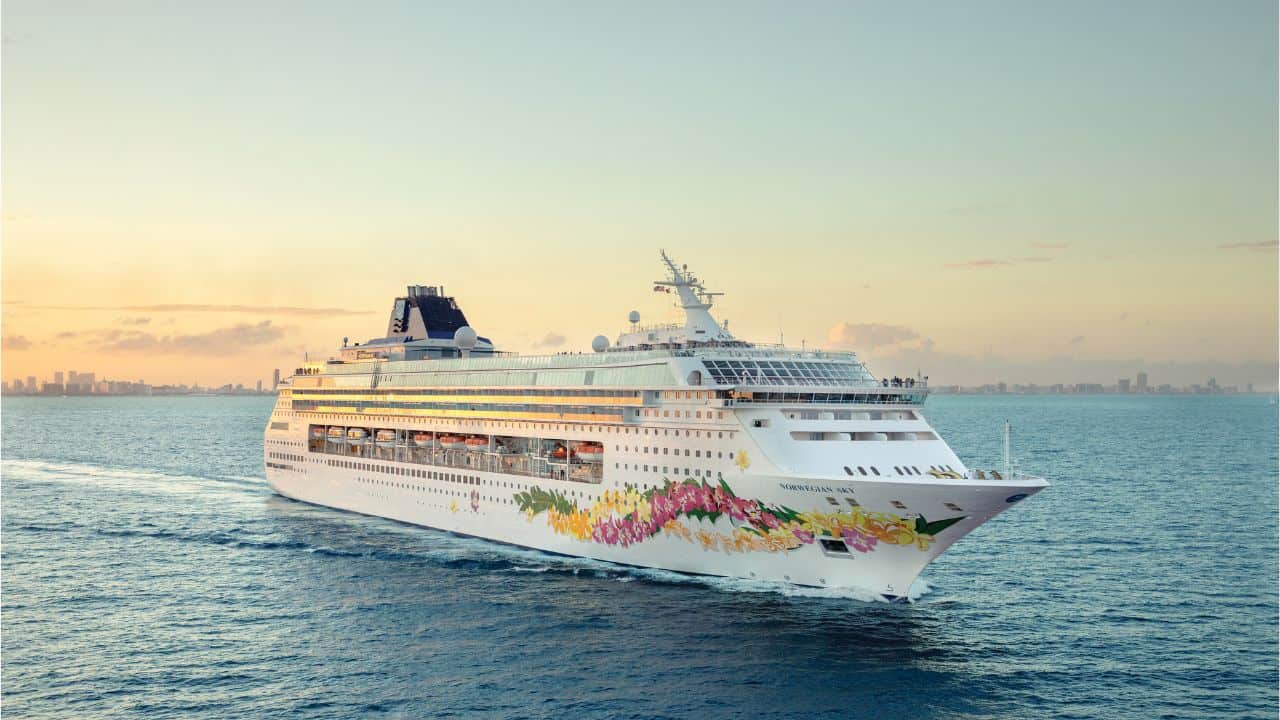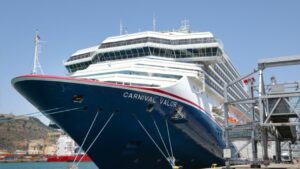
Image Courtesy of Norwegian Cruise Lines
These Cruise Lines Are the Best — And Worst — At Sanitation, According to a New Study
October 20, 2024
When it comes to cruise lines, some companies get higher marks than others when it comes to sanitation. A new study revealed which were the best and worst when it comes to this very important factor. Let’s take a look at which companies scored high marks and which ones could use more than a little improvement.
Cruise Lines & Sanitation: Which Companies Get High Marks?
Although stomach ailments such as norovirus can be unpleasant in any setting, they can be particularly distressing aboard cruise lines due to their easy transmission when there isn’t effective sanitation.
According to USA Today, the Vessel Sanitation Program of the Centers for Disease Control and Prevention is specifically made to prevent gastrointestinal infections from spreading while on cruises. It includes ship supervisor training, outbreak response, vessel inspections, and more.
According to the Cruise Lines International Association, only 1% of ships have received failing scores since the voluntary program began in 1990, and the majority of ships score much higher. The association also claims that the cruise industry is the only one that regularly reports illnesses to the CDC and has scores posted in a central location.
Only two cruise lines have failed inspection thus far this year, but several others have come dangerously close to the edge. A decent score is defined as 86 or higher. Anything less than that is regarded as unsuccessful. Cruises from Carnival, Princess, and Ritz-Carlton have all been close to the edge of failing. Furthermore, the MSC Magnifica from MSC Cruises received an 86 in May. After Carnival Cruise Line and Royal Caribbean International, MSC Cruises is the third-biggest cruise line worldwide. Its headquarters are located in Switzerland.
Hapag-Lloyd Cruises, however, failed, with a 62 in September for its Hanseatic Inspiration cruise. “Supervisors were inadequately monitoring critical and high-risk food processes, permitting unsafe practices to continue in food preparation areas,” read the report, in part. One U.S. cruise line also failed the inspection this year: the Margaritaville at Sea Paradise with an 83 in May, though it earned a 92 more recently in July.
On the positive side, 20 ships have scored a perfect 100 so far this year, including a different Carnival cruise, two Celebrity Cruises ships, a Disney cruise, three from MSC Cruises, six from Norwegian, and more.
‘Cruisezilla’ Ships Have Doubled in Size
With the size of many ships on various cruise lines being as big as they are, it stands to reason that sanitation should take top priority. In fact, the size of many so-called “cruisezilla” ships — that is, the jumbo-sized cruise ships like Royal Caribbean’s Icon of the Seas — has doubled in size since the year 2000.
The Guardian wrote in August, “If the industry’s growth does not slow, the biggest ships in 2050 will be eight times larger, in terms of tonnage, than the Titanic — the largest ship on the seas before it sank a century ago,” according to the campaign group Transport & Environment (T&E).
According to estimates from the cruise industry, over 35 million people will take cruises on cruise ships in 2024. However, there are additional anticipated issues that come along with this growing interest and cruise ship operators’ attempts to make their ships bigger and more exciting for visitors.
As reported by The Guardian, methane emissions increased 500% during the same period, and these larger vessels “pumped out 17% more carbon dioxide in 2022 than they did in 2019.” Furthermore, according to Sky News, the number of cruise ships has increased dramatically over the last 50 years, from 21 in 1970 to 515 currently.
Inesa Ulichina, a sustainable shipping officer for the group, said in a statement to T&E, “Today’s cruisezillas make the Titanic look like a small fishing boat. How much bigger can these giants get? The cruise business is the fastest growing tourism sector and its emissions are quickly getting out of control.”
She added: “The only green and scalable solution for decarbonizing maritime activities is e-fuels. Cruising is a luxury business and operators must take responsibility for their climate impact. If they want to avoid becoming increasingly unwanted visitors, they must clean up their act.”
Recent News








